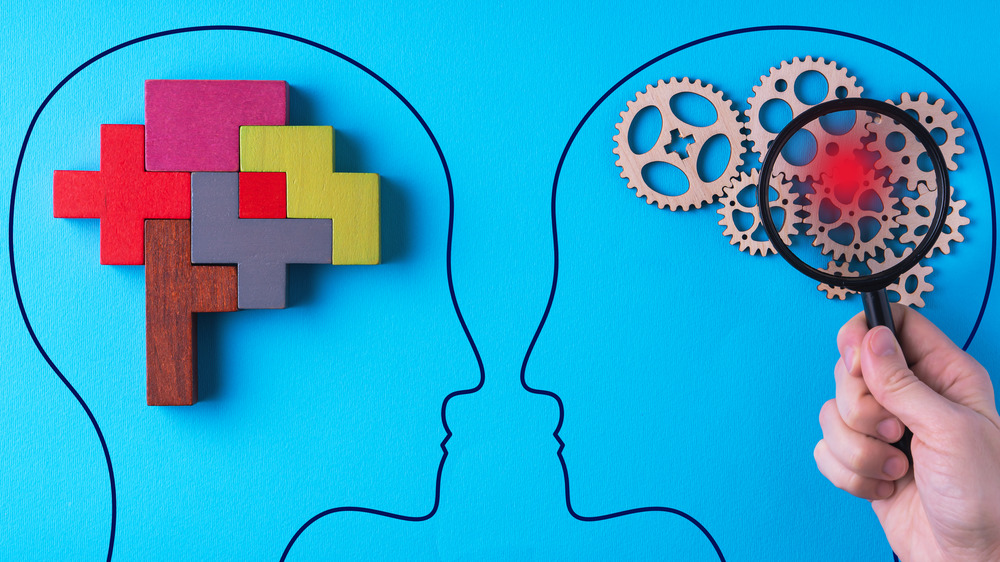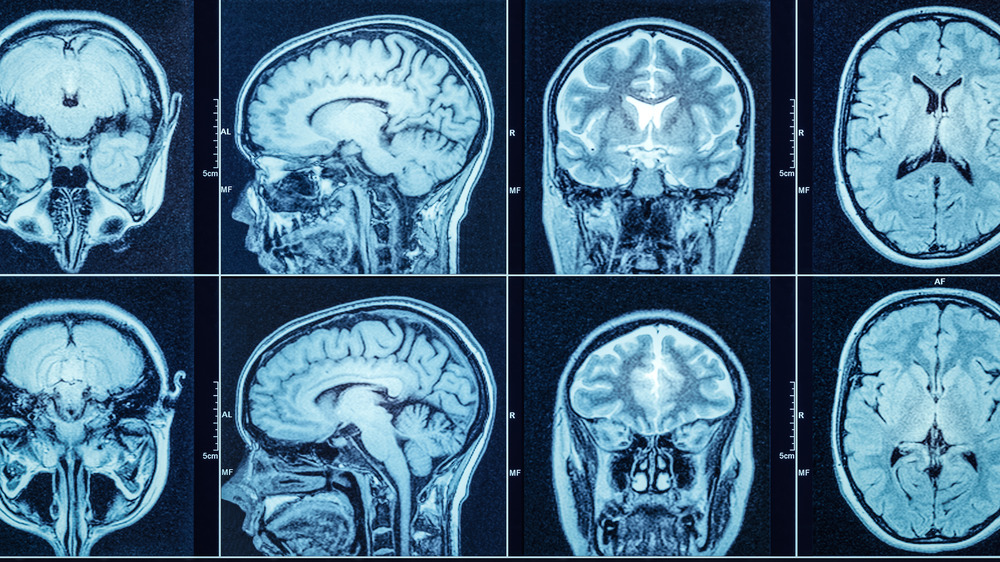We Finally Know Why The Human Brain Is So Big
Oh, humans and their big brains. The universe may be, by recent estimates, 13.8 billion years old (per Space), but it's only within the past 10,000 years that Homo sapiens has gone from splitting flint to splitting the atom, from crafting pottery to crafting spaceships. That's not to say that technology equals "advanced," certainly not ethically, any more than big brain equals better brain. But it's true that the size of the human brain, at 2.2 percent of our body weight (per the Montague Cobb Research Lab), combined with the cerebral cortex's increased surface area of rumpled ridges and valleys (gyri and sulci), has played a big part in our cognitive abilities, particularly metacognition — the ability to think about thought.
Neanderthals (Homo neanderthalensis) actually had bigger brains than ours, at 1,500 cubic centimeters, as opposed to Homo sapiens' 1,350 cubic centimeters. That, however, was because they had bigger, bulkier bodies overall. Elephants, the largest land mammal, as Frontiers in Neuroanatomy describes, have brains three times heavier than ours overall, with 257 billion neurons. They have about three times more than the approximately 86 billion neurons found in humans. But elephants' cerebral cortex — the rumpled surface-level "gray matter" — contains only 5.6 billion neurons to a human's average 16.3 billion. Therein lies the key clue about the intelligence of Homo sapiens.
Yet, when compared to other primates — gorillas, chimpanzees, etc. — the human brain is disproportionately larger. Why? Until very recently, no one had any clue.
RNA switches accelerate the early growth of neurons
First caveat from here, as indicated before — and it should go without saying — a bigger brain does not mean, in and of itself, a more intelligent brain. Even the definition of "intelligence" is the subject of ongoing debate that encompasses multiple disciplines and numerous theoretical models such as those outlined on Simply Psychology. So before you start thinking, "Yeah, we're so smart, and those chimps are so dumb," go ahead and watch a compilation of Jackass on YouTube.
Back to the science: As The Guardian explains in a March 24, 2021, article, Dr. Madeleine Lancaster, developmental biologist at the Medical Research Council's Laboratory of Molecular Biology in Cambridge, may have cracked the code regarding why human brains are disproportionately large. A typical gorilla brain is about 500 cubic centimeters, for instance, and a chimpanzee's is about 400 cubic centimeters. But a gorilla isn't one-third the size of a person, like its brain. Why the disparity?
Basically, it can be traced to human neural development, when neural progenitor cells — original, undifferentiated brain cells — multiply into the different types of neurons that comprise the entirety of a fully developed brain. At that point, RNA switches, such as those on the ZEB2 gene, comprise "cell morphogenesis factors" that control the speed and differentiation of neurons. In humans, these switches, as Dr. Lancaster's report on Cell indicates, accelerate the proliferation of cells to the eventual, vast quantities that outstrip our primate partners.

